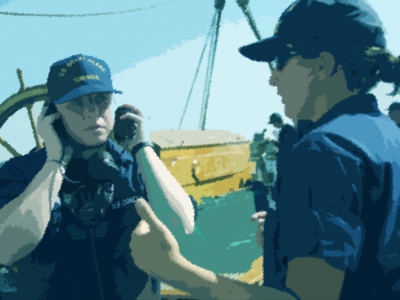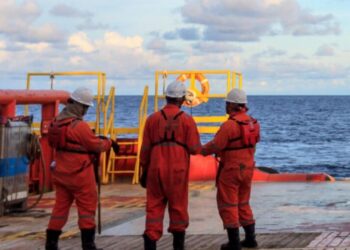IMO and other parties contribute to empower women in the maritime industry
Shipping has historically been a male-dominated industry and that tradition runs long and deep. However, through its global programme on the Integration of Women in the Maritime Sector, IMO is making a concerted effort to help the industry move on from that tradition and to help women achieve a representation within it that is more in keeping with twenty-first century expectations.
Last year, IMO launched film “Women at the helm”, showing how the work of IMO, and others has begun to promote change for the better for women in shipping, and highlightinh first-hand experiences from some of those who have already succeeded.
IMO staff member Captain Beatrice Vormawah, Head, Technical Cooperation Implementation Co-ordination Section, Maritime Safety Division, has no regrets about her earlier career at sea in a “man’s world”. Listen to IMO podcast for more.
Accordinf to the ITF, women make up only an estimated 2% of the world’s maritime workforce. Women seafarers work mainly in the cruise and ferries sector, often for Flags of Convenience (FOC) vessels. These are among the worst paid and least protected of jobs at sea. Women also tend to be younger, and fewer are officers than their male crew mates.Their low number means that women can be subject to discrimination and harassment. The maritime unions are alert to these dangers and strive to protect the interests of women members – who now number about 23,000 worldwide.
ITF has released best practice guide named “Winning a better deal for women“ which was developedoff the back of a survey of affiliate unions around the world, focusing on:
|
ITF’s work for women seafarers
The ITF is calling on employers, the ILO and trade unions to prioritise the following issues that have been identified as vitally important for women seafarers:
|
It’s still rare to find women workers at sea but, largely thanks to trade unions, more women are confronting prejudice and becoming valuable members of ships’ crew.
Discrimination women seafarers face
Women can face discrimination even getting into seafaring work. In some countries, for example, maritime education and training institutions are not allowed to recruit women to nautical courses. Women tend to enrol on navigation rather than engineering courses. Even once trained, they may have to face prejudice from ship owners who won’t employ women.
Once employed, women seafarers may also face lower pay even though they are doing work equivalent to that of male colleagues. Women may also be denied the facilities or equipment available to male workers, which is a form of discrimination.
These are all areas that are concerns of maritime trade unions.
If you are a woman seafarer facing such discrimination, contact your trade union for support and advice.
Recently ETF, ECSA released useful guidelines for all seafarers on how to eliminate workplace harassment and bullying which may aid women seafarers as well. More information may be found at SAFETY4SEA article
How to eradicate bullying and harassment in shipping
Also view the following relevant videos:
Read SAFETY4SEA article regarding ITF and Women Seafarers by clicking here
Also, visit Women’s International Shipping & Trading Association (WISTA) www.wista.net
Image Credit: IMO www.imo.org






























































